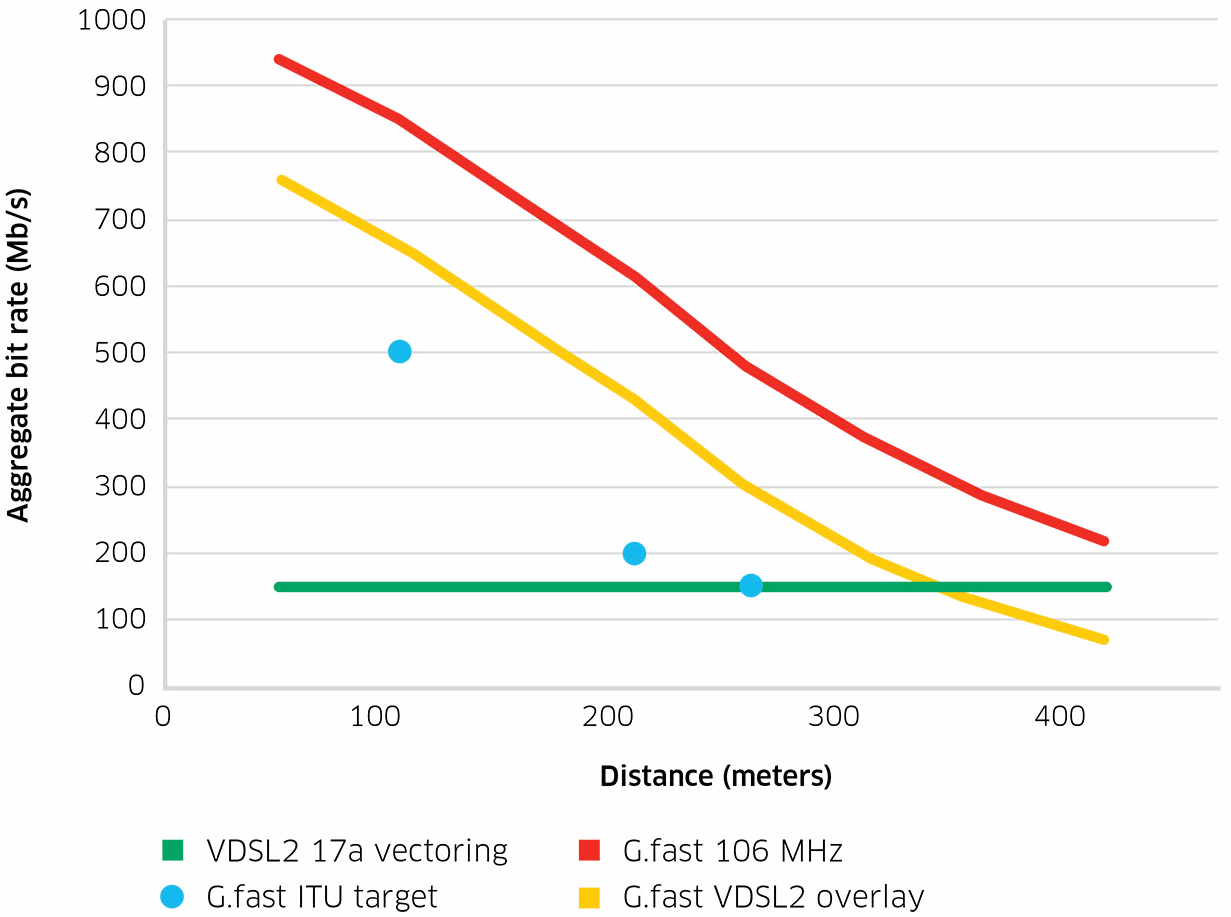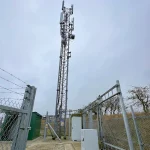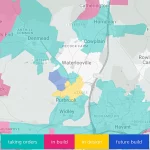BT Spectrum Refarming Trial May Boost UK G.fast and FTTC Broadband Speed
A new Proof of Concept trial in Kent (England) is about to begin that could allow Openreach’s (BT) new ultrafast G.fast technology to share the same spectrum as existing FTTC (VDSL2) “fibre broadband” services, which in the future might help to boost speeds beyond 330Mbps.
At present most “superfast broadband” connections on Openreach’s UK telecoms infrastructure are delivered via their VDSL2 based Fibre-to-the-Cabinet (FTTC) technology, which uses up to 17.664MHz of spectrum and can deliver speeds of up to 80Mbps.
By comparison the new G.fast service harnesses spectrum between 19-106MHz in order to deliver speeds of up to 330Mbps (note: there’s a lot more to it than just spectrum but we’re only looking at one aspect). The technology can go much faster (Gigabit speeds at a few tens of metres) but BT have an eye on mass market coverage rather than niche performance at the top end (this would also be difficult to reliably advertise).
Advertisement
Both technologies need to keep some distance from one another (i.e. G.fast can’t use the VDSL2 spectrum and vice versa) in order to avoid interference (see example impact in the chart below from Nokia Networks). Similarly they also use two different forms of half / full duplexing (i.e. the transmission of data in two directions, either asymmetrically or symmetrically): VDSL2 uses Frequency Division Duplex (FDD) and G.fast harnesses Time Division Duplex (TDD).

Suffice to say that getting the two to co-exist in overlapping spectrum frequencies is an incredibly difficult proposition, particularly given the key problem of crosstalk interference from G.fast into VDSL2 and to what extent this difficult but predictable non-stationary crosstalk could be mitigated.
G.fast can tackle crosstalk via Vectoring by default, which works a bit like noise cancelling headphones (i.e. it coordinates the copper line signals in order to remove interference). Sadly Vectoring on VDSL2 has been much harder to achieve (here) and today is only implemented in certain very specific / busy areas (i.e. where the problem is most acute), which can help to return FTTC speeds to more normal levels.
Advertisement
Back in January 2017 ISPreview.co.uk revealed that BT’s researchers were in the process of evaluating a “ground breaking” solution that might be able to overcome this challenge (here). The good news is they’ve recently added a new Proof of Concept (PoC) trial to their roadmap for Spectrum Refarming, which will begin on 11th May 2017 in All Hallows (Kent) where most of the local FTTC cabinets have been upgraded with subsidies (Broadband Delivery UK). An earlier test also took place at the Cambridge Science Park.
An Openreach spokesperson informed ISPreview.co.uk that the new PoC trial “is an opportunity to explore a potential way of improving G.fast capability in terms of extending coverage and speed whilst protecting and in some circumstances improving VDSL2 performance.”
The latter remark about “improving” VDSL2 performance is interesting because normally achieving true co-existence would be very difficult without some trade-off in VDSL2 performance. However Openreach said that their PoC would test the hypothesis that applying Vectoring with Refarming in tandem could more than protect existing VDSL2 speeds, whilst improving G.fast.
We have previously been told that mitigating the predictable non-stationary crosstalk probably cannot be achieved without some trade-off in VDSL2 performance, although this assumed that Openreach would stick with a purely static approach to spectrum management. The operator was also known to have been considering both a semi-static or dynamic option (dynamic would be very complex to implement).
Advertisement
At present there is a guard band between the VDSL and G.fast spectra (gap exists between 17.6-19MHz) to ensure spectrum compatibility and interestingly Openreach noted that this would be preserved by their refarming approach. “So there should be no material difference between what we are rolling out today, other than the change of frequencies,” said the spokesperson.
Openreach added that G.fast vectoring and VDSL vectoring are independent – if there were frequency overlap then one would act as an alien into the other. Also the fact that G.fast uses the same spectrum for both [upstream] and [downstream] would result in near-end crosstalk (NEXT) arising between the systems.
PoC trials are usually quite short and so it shouldn’t come as a surprise that this one will only run for two weeks. The trial is also expected to involve two street cabinets and around 300 lines. It’s still very early days for this technology and it may not amount to anything, although equally it could in the future help to improve G.fast speeds and coverage (Openreach has a long-term goal of reaching 500Mbps by 2025). Meanwhile a question mark will remain over its impact on VDSL2 but the trial may provide some verifiable answers.
We did also query the choice of cabinets, given that those selected have been deployed as part of the state aid supported Broadband Delivery UK programme. Apparently Openreach chose those cabinets because they happened to meet various criteria from a limited choice of cabs with VDSL2 and G.fast.
The results of this trial are expected to be published in June 2017 (CFPCG). The PoC also forms part of related work being handled by BT’s Head of Access Platform Innovation, Kevin Foster, who is Chairman of NICC’s DSL Task Group.
Mark is a professional technology writer, IT consultant and computer engineer from Dorset (England), he also founded ISPreview in 1999 and enjoys analysing the latest telecoms and broadband developments. Find me on X (Twitter), Mastodon, Facebook, BlueSky, Threads.net and Linkedin.
« UK ISP TalkTalk Slows Broadband Bleed and Sees Strong “Fibre” Take-up

















































Comments are closed